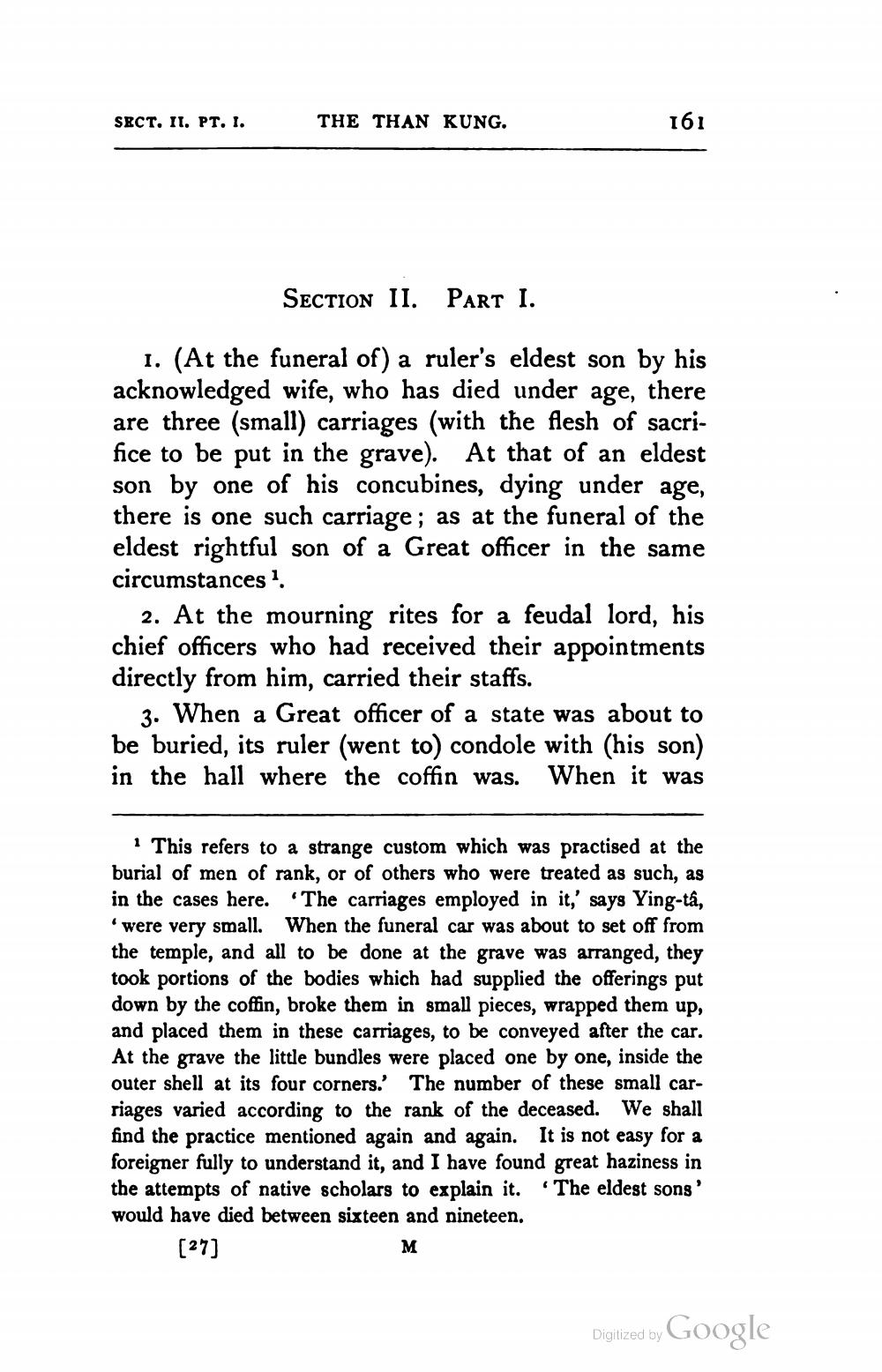________________
SECT. II. PT. I.
THE THAN KUNG.
161
SECTION II. Part I.
1. (At the funeral of) a ruler's eldest son by his acknowledged wife, who has died under age, there are three (small) carriages (with the flesh of sacrifice to be put in the grave). At that of an eldest son by one of his concubines, dying under age, there is one such carriage; as at the funeral of the eldest rightful son of a Great officer in the same circumstances ?
2. At the mourning rites for a feudal lord, his chief officers who had received their appointments directly from him, carried their staffs.
3. When a Great officer of a state was about to be buried, its ruler (went to) condole with his son) in the hall where the coffin was. When it was
This refers to a strange custom which was practised at the burial of men of rank, or of others who were treated as such, as in the cases here. The carriages employed in it,' says Ying-tâ,
were very small. When the funeral car was about to set off from the temple, and all to be done at the grave was arranged, they took portions of the bodies which had supplied the offerings put down by the coffin, broke them in small pieces, wrapped them up, and placed them in these carriages, to be conveyed after the car. At the grave the little bundles were placed one by one, inside the outer shell at its four corners.' The number of these small carriages varied according to the rank of the deceased. We shall find the practice mentioned again and again. It is not easy for a foreigner fully to understand it, and I have found great haziness in the attempts of native scholars to explain it. The eldest sons' would have died between sixteen and nineteen.
[27]
M
Digitized by Google




